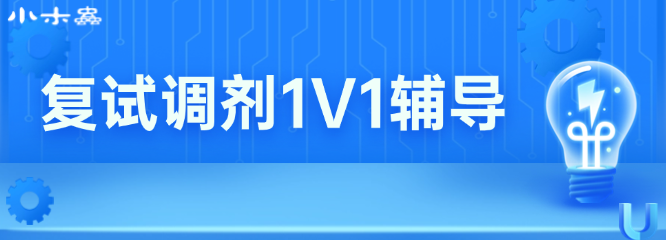| 查看: 13477 | 回复: 479 | ||||
| 【奖励】 本帖被评价254次,作者xiejf增加金币 200 个 | ||||
| 本帖产生 1 个 MN-EPI ,点击这里进行查看 | ||||
| 当前只显示满足指定条件的回帖,点击这里查看本话题的所有回帖 | ||||
xiejf专家顾问 (文学泰斗)
|
[资源]
Nature子刊最新综述:光学透明电极的发展---过去的成就和未来的挑战
|
|||
|
最新一期的Nature Photonics杂志(自然·光子学)刊发了由德国科学家Klaus Ellmer撰写的关于透明电极的综述文章,题目为Past achievements and future challenges in the development of optically transparent electrodes。已经成功实现工业化的ITO玻璃和FTO玻璃是透明导电电极的两个典范,但是寻找更廉价性能更好的替代物仍然是当今面临的挑战。石墨烯的发现可能会对该领域产生革命性的影响。而更高的光透过性和更高的导电性势必会使透明电极在太阳能电池、光解水、发光二极管和显示器等领域带来更好的性能。文章9页,引文95篇。 Transparent conductive electrodes play important roles in information and energy technologies. These materials, particularly transparent conductive oxides, are widely used as transparent electrodes across technical fields such as low-emissivity coatings, flat-panel displays, thin-film solar cells and organic light-emitting diodes. This Review begins by summarizing the properties and applications of transparent conductive oxides such as In2O3, SnO2, ZnO and TiO2. Owing to the increasing demand for raw materials — especially indium — scientists are currently searching for alternatives to indium tin oxide. Carbon nanotube and metal nanowire networks, as well as regular metal grids, have been investigated for use as transparent conductive electrodes. This Review compares these materials and the recently 'rediscovered' graphene with today's established transparent conductive oxides. / nphoton_2012_282-f1.jpg [ 来自科研家族 材料家族 ] |
» 本帖附件资源列表
-
欢迎监督和反馈:小木虫仅提供交流平台,不对该内容负责。
本内容由用户自主发布,如果其内容涉及到知识产权问题,其责任在于用户本人,如对版权有异议,请联系邮箱:xiaomuchong@tal.com - 附件 1 : Pastachievementsandfuturechallengesinthedevelopmentofopticallytransparentelectrodes.pdf
2012-11-30 14:29:33, 2.09 M
» 收录本帖的淘帖专辑推荐
» 本帖已获得的红花(最新10朵)
» 猜你喜欢
 复现一篇在PDMS上生长金纳米线做SERS的文章,主要是配置生长液的问题,求助
已经有0人回复
复现一篇在PDMS上生长金纳米线做SERS的文章,主要是配置生长液的问题,求助
已经有0人回复
 水热法合成二氧化钛大小不均匀
已经有0人回复
水热法合成二氧化钛大小不均匀
已经有0人回复
 无机化学论文润色/翻译怎么收费?
已经有165人回复
无机化学论文润色/翻译怎么收费?
已经有165人回复
 教材推荐
已经有1人回复
教材推荐
已经有1人回复
 真空或者惰性气体下破碎合金成毫米级设备?
已经有2人回复
真空或者惰性气体下破碎合金成毫米级设备?
已经有2人回复
 考博求助
已经有5人回复
考博求助
已经有5人回复
 找客体
已经有0人回复
找客体
已经有0人回复
» 本主题相关商家推荐: (我也要在这里推广)
» 本主题相关价值贴推荐,对您同样有帮助:
 【求助】RSC,Springer,Nature子刊上,已发表文章的版权申请
已经有0人回复
【求助】RSC,Springer,Nature子刊上,已发表文章的版权申请
已经有0人回复 华人女科学家Nature子刊发文 新工具发现癌细胞内复杂突变
已经有0人回复
华人女科学家Nature子刊发文 新工具发现癌细胞内复杂突变
已经有0人回复 长春应化所在《Nature Communications》上发表最新成果
已经有0人回复
长春应化所在《Nature Communications》上发表最新成果
已经有0人回复 Nature子刊Emerging Microbes and Infections有关H7N9的最新临床文献
已经有1人回复
Nature子刊Emerging Microbes and Infections有关H7N9的最新临床文献
已经有1人回复 【小兵分享系列之十二】复旦研发的新型“水锂电”--资讯+Scientific Reports原文
已经有247人回复
【小兵分享系列之十二】复旦研发的新型“水锂电”--资讯+Scientific Reports原文
已经有247人回复 APL Materials是绝地反击,还是垂死挣扎?我们拭目以待。
已经有65人回复
APL Materials是绝地反击,还是垂死挣扎?我们拭目以待。
已经有65人回复 nature 子刊上关于光子晶体的几篇最新文章
已经有11人回复
nature 子刊上关于光子晶体的几篇最新文章
已经有11人回复 Nature子刊最新综述:胶体量子点发光技术的出现
已经有628人回复
Nature子刊最新综述:胶体量子点发光技术的出现
已经有628人回复 nature出版集团旗下的两本开放获取期刊:居家旅行、杀人越货之忽悠利器
已经有17人回复
nature出版集团旗下的两本开放获取期刊:居家旅行、杀人越货之忽悠利器
已经有17人回复 nature出版集团旗下的两本开放获取期刊:居家旅行、杀人越货之忽悠利器
已经有22人回复
nature出版集团旗下的两本开放获取期刊:居家旅行、杀人越货之忽悠利器
已经有22人回复 请大家讨论一下最近nature的最新期刊scientific reports是什么档次的期刊?
已经有40人回复
请大家讨论一下最近nature的最新期刊scientific reports是什么档次的期刊?
已经有40人回复 CVD石墨烯----成会明在nature communication最新文章
已经有9人回复
CVD石墨烯----成会明在nature communication最新文章
已经有9人回复 Nature公布17个小鼠关键基因组测序结果
已经有3人回复
Nature公布17个小鼠关键基因组测序结果
已经有3人回复 【转帖】华人学者Nature子刊聚焦调控因子p21蛋白!
已经有1人回复
【转帖】华人学者Nature子刊聚焦调控因子p21蛋白!
已经有1人回复 用邮箱和Google Reader追踪最新科研进展
已经有483人回复
用邮箱和Google Reader追踪最新科研进展
已经有483人回复
|
本帖内容被屏蔽 |
371楼2013-01-30 19:06:05












 回复此楼
回复此楼
 pengchao1988
pengchao1988



 24
24